In the digital world, content discovery platforms are pivotal for businesses aiming to capture a wider audience. Among these platforms, Outbrain has carved its own niche.
This review is my exploration of Outbrain, shedding light on its features, functionalities, and overall effectiveness.
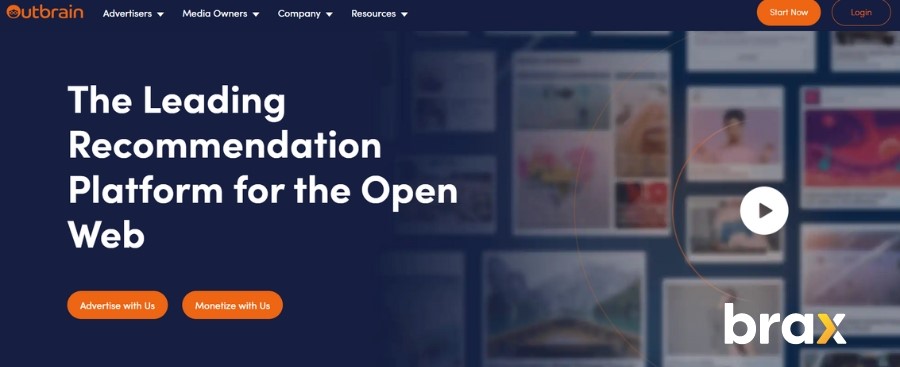
I've had the chance to work with several content discovery platforms, being a digital marketing specialist myself. Each one offers unique experiences and lessons.
My journey with Outbrain has been insightful. From initiating campaigns to analyzing the outcomes, each step provided a deeper understanding of the platform's capabilities.
This review encapsulates my personal experience with Outbrain, aiming to provide an honest overview of its strengths and areas that (I believe) could use some improvement.
If you're a business owner looking to boost your content promotion, or a marketing expert exploring different platforms, this review will help you grasp what Outbrain can offer. So, let's dive in and uncover the Outbrain experience!
What is Outbrain?
Outbrain is an intriguing player in the digital landscape, operating as an independent native advertising platform.
It's a powerhouse that fuels the Discovery Feeds on several popular media outlets. In fact, the company prides itself in delivering an astounding 344 billion native ad impressions every month. There's enough traffic for even tens of thousands of advertisers to use the platform at the same time!
I'm quite positive you've noticed one of two recommended articles showing the Outbrain logo before (which is why it's pretty common for people to say they're familiar with the logo).

With its advanced technology, Outbrain makes it possible to explore and discover new content on the open web, creating a dynamic environment for both content creators and consumers.
But what makes Outbrain stand out? It offers ad placements to advertisers on websites within its network — in the form of native ads.
Outbrain uses targeted advertising to recommend various forms of content — articles, slideshows, blog posts, photos, or videos — to readers. It's like a smart matchmaker, connecting audiences with the content they might love but haven't discovered yet.
The platform's services go beyond mere recommendations.
Its proprietary Smartfeed technology improves engagement between audiences and native content, delivering personalized content and a better user experience.
Additionally, the platform is beneficial for advertisers seeking to reach wider audiences and publishers like CNN and Bloomberg looking to monetize their content.
It's not just about linking external stories; it's about creating meaningful, data-driven connections between interests and actions.
If you'd like to get a feel of how native advertising works, Outbrain provides this very nifty and easy-to-understand demo.
Getting Started with Outbrain
What I like best about Outrain is that it is very user-friendly. Even complete noobs in the native advertising arena will not have any trouble getting started.
Account setup and campaign creation in Outbrain is even easier than social media advertising.
Here's your roadmap:
1. Account Setup and Activation
Begin at the Outbrain registration page.
Choose your country, key in an active email address, and set a password. This email will be your direct communication line with Outbrain.
You'll get an activation link in your email. Clicking it verifies your email address and activates your account.
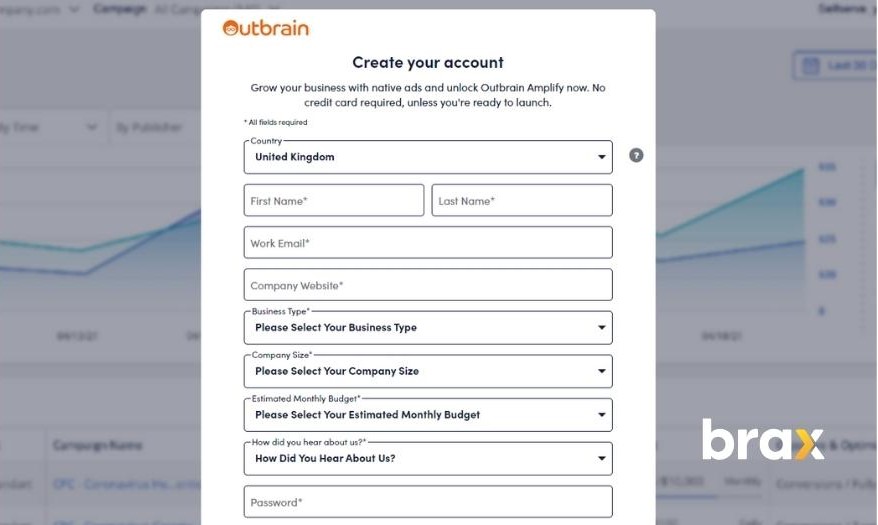
2. Campaign Creation
With an active account, you're ready to create your first campaign.
By default, new accounts are placed on Automated Mode, which makes campaign creation easy for beginners.
It involves adding your landing page or offer page URL, then setting objectives (choose among Sales, Leads, Traffic, and App Installs).
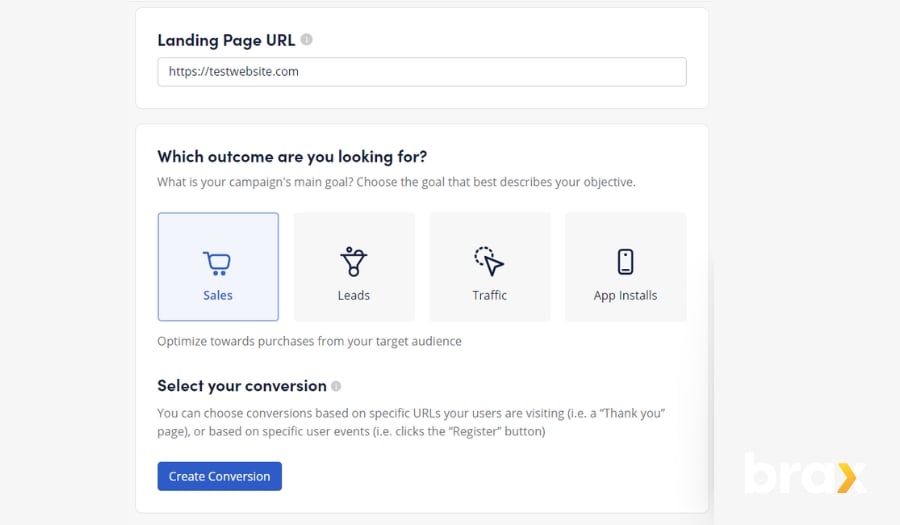
If you choose Traffic, you will simply be asked to go to the next page. If you choose Sales, Leads, or App Installs, you will be asked to create a conversion.
This involves creating a pixel and adding it to the Thank You page (or something similar) that fires back a signal to Outbrain confirming the conversion.
Targeting
On the next page, you'll be asked to set your targeting based on location, audience target, and device.
When it comes to device options, your options are either Mobile or Desktop. You can't choose both in one campaign.
If you'd like to finely tune your audience targeting, check our post on How to Target Audience in Native Ads for details on how to convert Automated Mode to Manual Mode and see all available options.
Doing so shows expanded targeting. For instance, when it comes to device targeting in expanded mode, you'll also have the option to choose the operating system or even the browser.
Ads Creation
What I love about Outbrain is that it provides AI-generated ads based on the URL you provided. It pulls data from your landing page and shows images and texts relevant to the content.
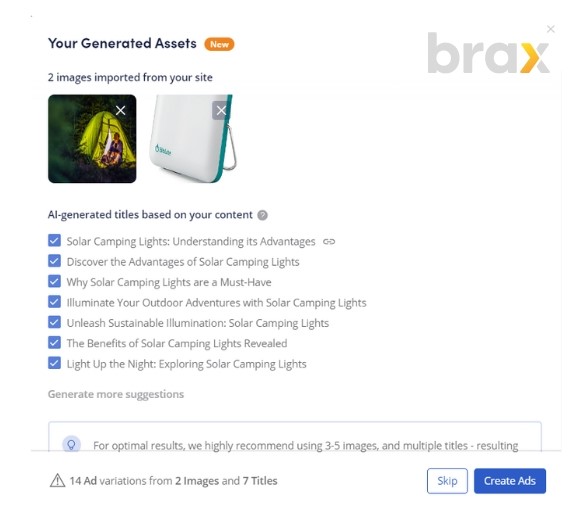
So, if you have no idea about where to start or what kind of ad creatives to utilize, you can use their recommendations. At the very least, these can act as inspiration.
Another thing I like about Outbrain is that it provides a preview of how your ad would look on publishing websites. Many ad networks don't show this at all, so it is a welcome feature.
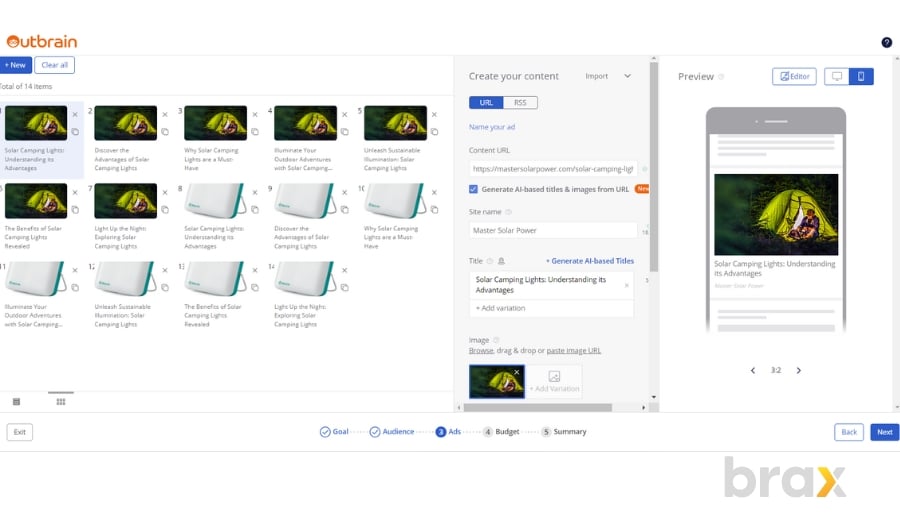
Budget and Schedule
After creating your ad, it's time to set your budget and schedule. This step is crucial as it directly impacts your campaign's reach and effectiveness.
You must first set your CPC bid, which is how much you want to pay per click. A recommended bid will be placed, but you can always add your own. The lowest is $0.01 per click.
The budget part is pretty straightforward. You need to set your daily budget, which is the maximum amount you're willing to spend per day on your campaign.
You'll be given three recommendations based on your initial settings and goal, but you can also set a budget of your own. The minimum daily budget on Outbrain is $20.
Remember, the higher your budget, the more exposure your ad will get.
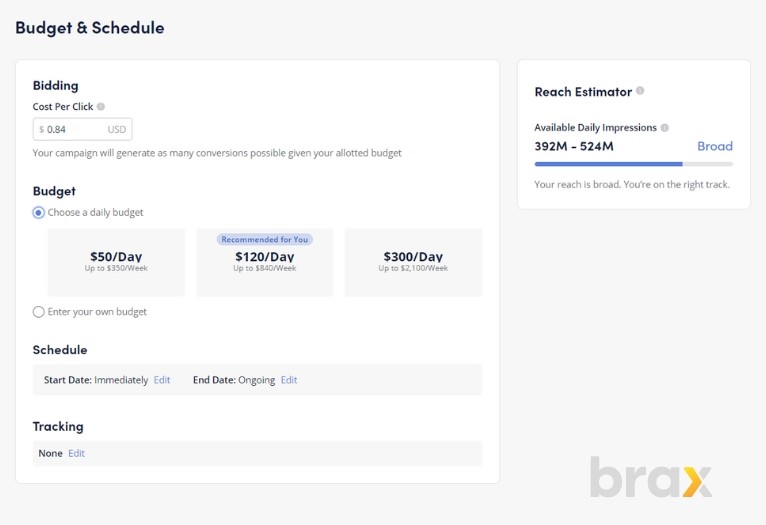
The scheduling part allows you to control when your ads will be shown. You can set a start and end date for your campaign. This is particularly useful for time-sensitive campaigns or promotions.
If you're on Manual Campaign Creation Mode, Outbrain allows you to choose specific days of the week or times of the day when your ads will be shown. This feature helps you target your audience during their peak activity times, enhancing the chances of engagement.
There's also an option to track your campaigns using a third-party platform. I recommend using Brax to manage your native advertising campaigns in Outbrain.
If you'll be using Brax, all you need to do is connect your account from within the Brax dashboard. Outbrain is already integrated within Brax, so connecting your account is pretty simple. (Read: How to Connect Outbrain Accounts To Brax)
With the budget and schedule set, you are ready to launch your campaign on Outbrain. Click Next and look at the summary of your campaign.
When you're ready, hit the 'Launch Campaign' button, and your ads will start being served on the Outbrain network, connecting your content with interested audiences.
Now, that wasn't so hard, was it?
3. Payment Details Addition
Before your campaign goes live, you must provide your payment details. Outbrain accepts Visa, Mastercard, Amex, and Discover cards for automatic payments.
You are charged in increments of $100. Once your campaign is first charged and the payment goes through, Outbrain will keep your campaign running. If the payment doesn't go through, your campaign is automatically stopped, so make sure the card you are using won't have issues to avoid campaign disruption.
If you'd like, you can also pre-pay so that you can make sure you spend only the budget you allocate for advertising. However, this is not open to everyone, and you need to discuss this with your account manager for assistance.
4. Outbrain Pixel Installation and Testing
One final thing to do is install the Outbrain conversion pixel on your website.
Test the pixel post-installation to confirm it's functioning as expected. This ensures your campaigns' success is accurately measured, enabling data-informed performance improvement decisions.
5. Reporting
Outbrain's reporting features? They're like a secret weapon for advertisers. It's all about giving you the power to track, analyze, and optimize your campaigns with precision.
Clicking on the "Campaigns" tab in your dashboard reveals a treasure trove of data about your campaign performance.
You can slice and dice this data any way you want. Date range, campaign, content, carousel card, you name it.
You can even break it down by device type or analyze audience interests. It's like having your own personal data scientist.
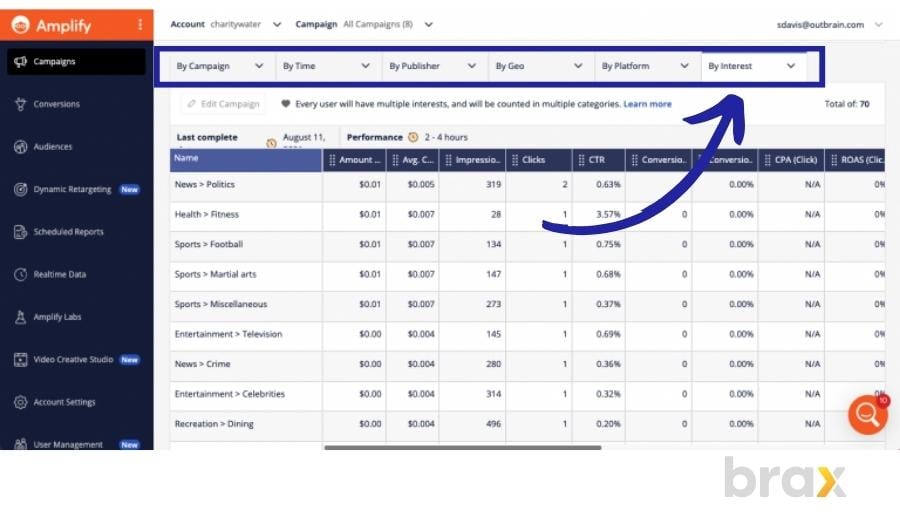
Need to focus on a specific campaign and its content? Just use the 'By Content' view.
Or maybe you want to compare multiple campaigns? Easy, just select them and view their performance side by side.
The Campaigns dashboard gives you a bird's eye view of your performance. And the best part is that you can export this data for later review or to plan future campaigns.
You can even schedule reports to be sent automatically to you and other members of your team. This is especially useful if you want to keep tabs on your performance but don't have the time or energy to look into it yourself.
Last but not least, Outbrain also provides a publisher list that shows where your ads are being shown as well as their respective CTRs. It's all about transparency!
Ad Formats
Outbrain offers four distinct native ad types, not just your typical recommendation widget.
Standard Native
This is also known as Content Recommendation, the classic format that allows businesses to promote their products or services effectively. It's designed to drive performance by presenting ads in a non-intrusive, content-friendly way.
Video (Clip)
The video ad format provides an animated ad experience, designed to captivate users and elevate brand awareness within a premium editorial context.
App Install
For businesses focusing on increasing their app installs, the App Install ad format is a no-brainer. It targets high-value users who are most likely to install your app.
Carousel
The Carousel ad format offers businesses an opportunity to showcase multiple products or tell a sequential story through images. This format encourages user interaction and engagement, making it an excellent tool for storytelling and showcasing.
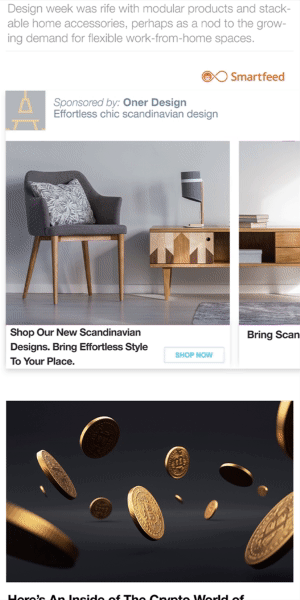
Image Source: Outbrain
Each of these ad types serves a unique purpose and caters to different marketing needs. However, only the Content Recommendation format is available for automated campaign creation, while the others — Video, App Install, and Carousel — require manual setup when automation is disabled.
Features and Functionalities
Outbrain comes with a myriad of powerful features; while some are essential for every user, others may seem less significant but come with their unique perks. For instance, the OB Code is a huge plus for me. For those who know how to wield it, it can prove to be an indispensable tool.
Let's delve into some of these nuanced features that are great to have and can significantly streamline your advertising efforts when used to their full potential.
Amplify Labs: OB Code
OB Code is a distinctive feature within the Outbrain Dashboard that enables marketers to set automated rules for their campaigns. These rules either trigger specified changes when certain conditions are met or send alerts when changes are made.
I've gotta say, as a heavy user of this feature, I can vouch for its effectiveness — especially for those marketers who are always tweaking their campaigns. Let me tell you, it's hands down my absolute favorite feature of them all.
One of the standout capabilities of OB Code is the ability to make bid changes to campaigns using semi-automatic CBS (Conversion Bid Strategy).
This provides a level of flexibility and control that can significantly enhance campaign performance.
OB Code also allows you to run the same code across all campaigns or set a separate code per campaign.
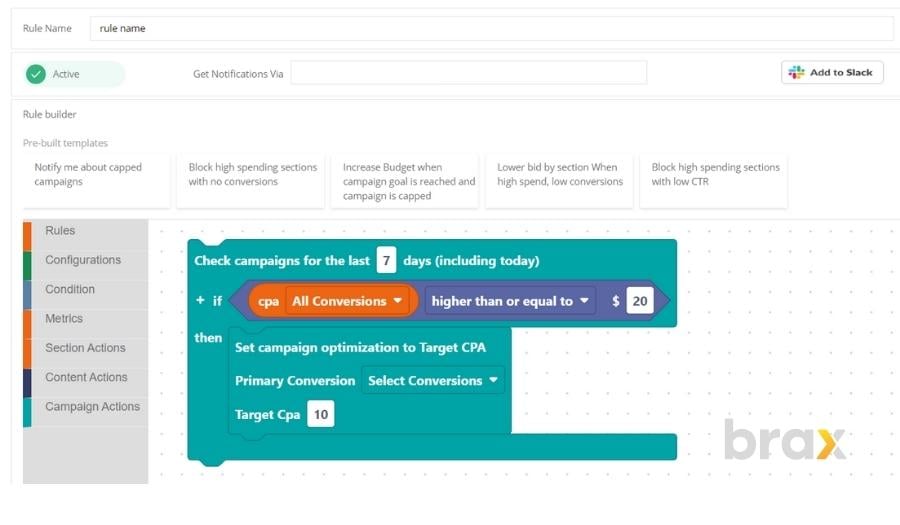
Another key advantage of the OB Code is the ability to get notified when underperforming, capping, or when the campaign did not cap. This ensures you're always aware of your campaign's status and can react accordingly.
Perhaps one of the most innovative features of OB Code is its ability to automatically raise your daily budget cap if your campaign goal is being met. This means that you won't miss out on potential customers during times your campaign is capped.
Realtime Data Dashboard
Outbrain's Realtime Data is like having your finger on the pulse of your campaign's life. This dynamic tool serves up live updates on the vitals of your campaign — impressions, spend, clicks, average CPC, and click-through rate.
It gives you an instant snapshot of your campaign's launch, incredibly useful for those time-sensitive events or offers. Plus, it allows you to spot any sudden fluctuations in spend, empowering you to make adjustments on the fly.
What's particularly cool about this feature is the ability to peek at network-level trends across Outbrain. You can see traffic over time across mobile, tablet, and desktop platforms. Such real-time insight into network changes helps advertisers seize opportunities during specific times and events.
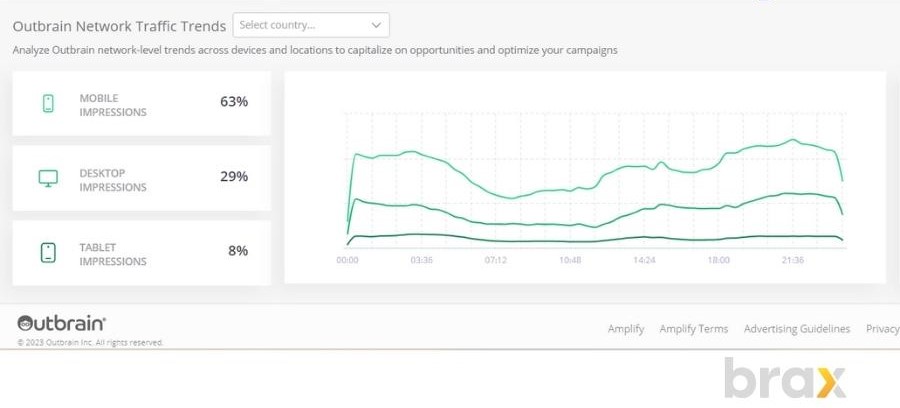
Audiences
Those who are not new to the world of digital advertising know how crucial it is to use the data you've gathered about your audience to show them ads that they will likely respond to.
And that's the purpose of Outbrain's Audience feature — you can build segments and create ads that match each segment. There are actually four ways to target audiences:
- For Retargeting
Outbrain allows you to retarget audiences based on their interactions with your content. This feature is crucial for reminding interested users about your offerings and nudging them toward conversion.
From my experience, retargeting audiences has led to improved conversion rates and better ROI.
- For Story Sequencing
This segmentation allows you to build momentum and send your audiences down a marketing funnel.
Story Sequencing allows you to present a series of content to the same reader, effectively guiding them through various stages of their journey or enlightening them about diverse facets of your brand. This increases overall audience engagement.
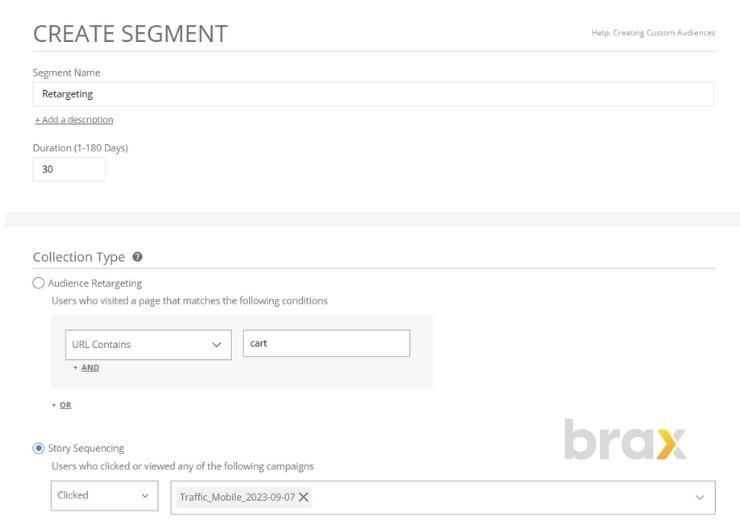
- Re-engaging with Customers
This is actually called the Converter Segment, and it's a great way to reach audiences who are already customers.
I remember the first time I used it. I was looking for a way to reconnect with users who had already completed a conversion action on my website. That's when I discovered the power of choosing the Converters Segment as my Collection Type.
It was like creating my own 'VIP Club', an audience made up of users who had already engaged with my site, regardless of whether their initial conversion came via Outbrain or not.
What struck me was its flexibility. The Converters Segment didn't discriminate between Event-based, URL-based, or Server-to-Server-based conversions — it supported them all.
Perhaps the most rewarding part was seeing how the Converter Segment could amplify the lifetime value of a customer.
- Value-Based Targeting
This is another one for reaching audiences who are already customers.
Working in the marketing field, I've often relied on Outbrain's "Value-Based Converters Segment". It's a feature that lets me zero in on users who have taken important actions on our site.
Let's say you want to target users who have made purchases exceeding $300 on your site. In this case, you'll select "purchase" as your conversion event and specify a conversion value of “300” or more.
There are several use cases where this can prove extremely useful. For example, if you want to target users who have made significant purchases on your site and showcase a new product that matches their taste, this feature is perfect.
Another example is when you want to expand your customer base. You can use this segment to create a Lookalike audience, targeting new users who are likely to behave similarly to your high-value converters.
Lastly, depending on your marketing goals (such as driving app downloads, subscriptions, or lead forms), you may want to exclude those who have already converted to avoid paying for ineffective ads.
Outbrain Pros and Cons for Advertisers
As with every advertising platform, Outbrain exhibits its own set of strengths and weaknesses, and these are what I've found:
The Upsides
- Simplicity through Automation: Outbrain's automated mode demystifies the process of creating native advertising, opening up the field to marketers at all levels.
- Control with Manual Mode: For those who want more control over their campaigns, Outbrain offers the ability to disable automated mode, allowing for more customization in targeting and campaign settings.
- AI-Generated Ads: These are particularly beneficial for novice advertisers, making the ad creation process more straightforward.
- Ease of Use: Outbrain's platform is praised for its intuitive interface, facilitating prompt campaign creation.
- Cost-Effective: Outbrain often provides lower Cost-Per-Click (CPC) rates compared to other platforms.
- Broad Audience Reach: Outbrain's network spans a wide array of websites, offering advertisers a significant scope for audience reach.
The Downsides
- Training Might Be Needed: Even though Outbrain is easy to navigate, some users suggest that an initial training period might be helpful to fully grasp the system.
- Possible Brand Misalignment: Given the vastness of websites in Outbrain's network, there's a chance that ads may appear on sites that don't align with an advertiser's brand or target demographic.
Outbrain Verdict: To Use or Not to Use?
Definitely to use!
What's not to love about access to a global network of top-notch publishers? This platform lets you engage with a wide variety of audiences right from your desk.
The beauty of Outbrain lies in its simplicity. Whether you're a seasoned marketer or a newbie, creating ads is a breeze, thanks to its automated mode. And for those control-freaks among us (don't worry, I'm one, too!), there's a manual mode that lets you tweak every little detail to your heart's content.
However, potential users should be aware of the possible misalignment between their ads and the sites they may appear on due to the wide range of websites in Outbrain's network. Consistent monitoring and regular optimization is key.
So, the bottom line? Outbrain does a solid job of marrying simplicity and output.
If you're using other native advertising platforms and it's getting quite difficult managing all your native ads, I suggest trying out Brax.
With Brax, you can effortlessly manage and fine-tune your native ads across different platforms. It's all about boosting your ad game and making every click count! Click here to book a demo and see how Brax can transform your native advertising strategy into a winning game plan.
If you liked this article, maybe you'll like these too:
- Outbrain Best Practices
- 9 Outbrain Creative Best Practices For Maximum Results
- Outbrain vs. RevContent: Which is Better?
- How Much Does Outbrain Cost and Other FAQs
- Using Bid Templates to Create White Lists in Outbrain

